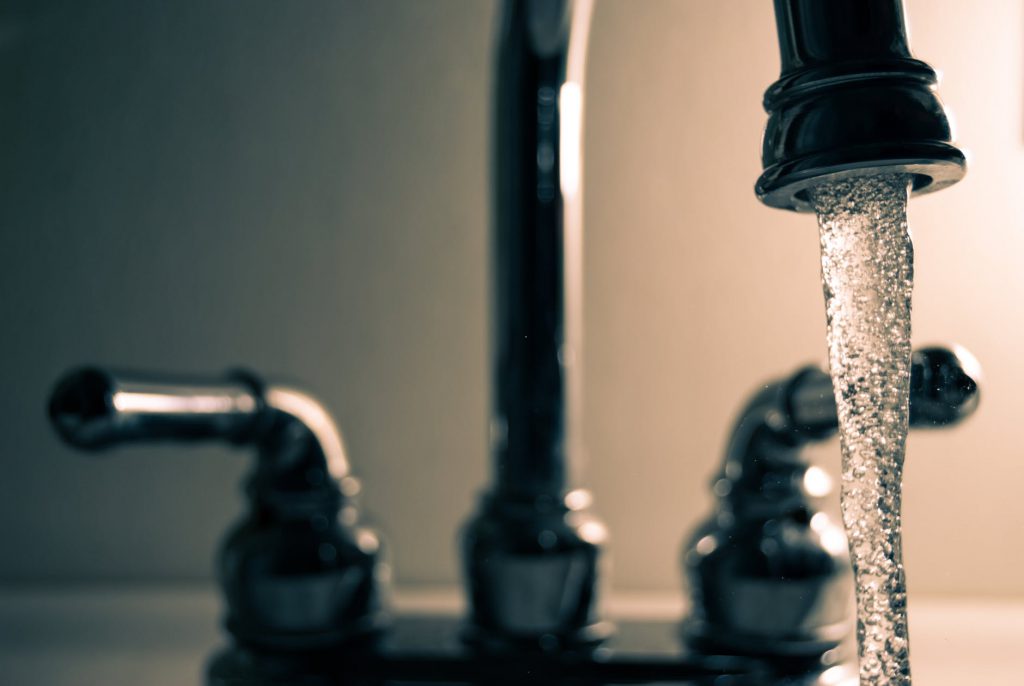City Will Raise Its Water Rates
Average customers in city and suburbs served directly will see their bills rise $7 per year.
It’s about to get a little bit more expensive to turn on the tap in Milwaukee and surrounding suburbs.
The average residential customer will see their water bill increase $7 a year under a proposal by the city-owned Milwaukee Water Works. The utility provides water to Milwaukee and 15 suburban communities.
Water Works superintendent Karen Dettmer described the proposal as “fairly modest for a residential consumer, but significant for our bottom line.” The change is expected to net the utility $2.7 million in 2020.
The change, vetted Wednesday morning by the Common Council’s Public Works Committee, would raise the water rate by three percent. According to the authorizing resolution, the increase would not go into effect before August 31st. The change still requires the approval of the state Public Service Commission.
The city’s current water rate is $2.08 per 100 cubic feet. That equates to four gallons of water costing just over one cent.
“We continue to be among the lowest rates in the nation for comparable cities, but also in the southeast region,” Dettmer told the committee. She promised to provide a ranking to the committee.
The change will directly impact residents of Milwaukee, Greenfield, Hales Corners, St. Francis and West Milwaukee. The city sells water at a wholesale rate to Brown Deer, Butler, Franklin, Greendale, Menomonee Falls, Mequon, New Berlin, Shorewood, Thiensville, Wauwatosa, West Allis and the Milwaukee County Grounds, which in turn resell it at their own rates. The city has approved selling water to Waukesha, but the work to connect the two cities is not yet complete.
The committee didn’t spend much time debating the actual proposal, instead choosing to focus on how cheap Milwaukee water is and attempting to decipher the cost per gallon (they couldn’t, and the Milwaukee Water Works’ website overstates the cost by a factor of ten at two cents per gallon). But that didn’t mean unanimous approval. Alderman Mark Borkowski voted against the proposed increase. It will next go before the full council.
The utility, which has a $153 million budget in 2019, leads the city’s effort to replace lead services lines.
The cost of replacing the publicly-owned portion of the approximately 70,000 lead laterals in Milwaukee was estimated at $750 million in early 2018. “That’s a major investment and, based on the Madison experience, would achieve almost nothing,” said Ald. Nik Kovac during Dettmer’s January confirmation hearing. A 2008 study of Madison’s effort to replace all of its lead laterals found that only 49 percent of the lead in water as coming from the lateral, with 38 percent coming from interior faucet or other sources on the premises. “Madison replaced every lead service line, and their lead in water rates are slightly lower, but essentially indistinguishable from ours,” said Kovac in January. Administration officials have repeatedly noted that paint is the primary source of lead poisoning in Milwaukee.
The city is able to derive a profit from the utility relative to its book value. In 2019, the utility is budgeted to transfer $13.3 million to the city’s general fund, up from $12.7 million in 2018.
If you think stories like this are important, become a member of Urban Milwaukee and help support real independent journalism. Plus you get some cool added benefits, all detailed here.
Legislation Link - Urban Milwaukee members see direct links to legislation mentioned in this article. Join today
City Hall
-
Council Blocked In Fight To Oversee Top City Officials
 Dec 16th, 2025 by Jeramey Jannene
Dec 16th, 2025 by Jeramey Jannene
-
Latest Effort to Adopt New Milwaukee Flag Going Nowhere
 Dec 3rd, 2025 by Jeramey Jannene
Dec 3rd, 2025 by Jeramey Jannene
-
After Deadly May Fire, Milwaukee Adds New Safety Requirements
 Dec 2nd, 2025 by Jeramey Jannene
Dec 2nd, 2025 by Jeramey Jannene






















